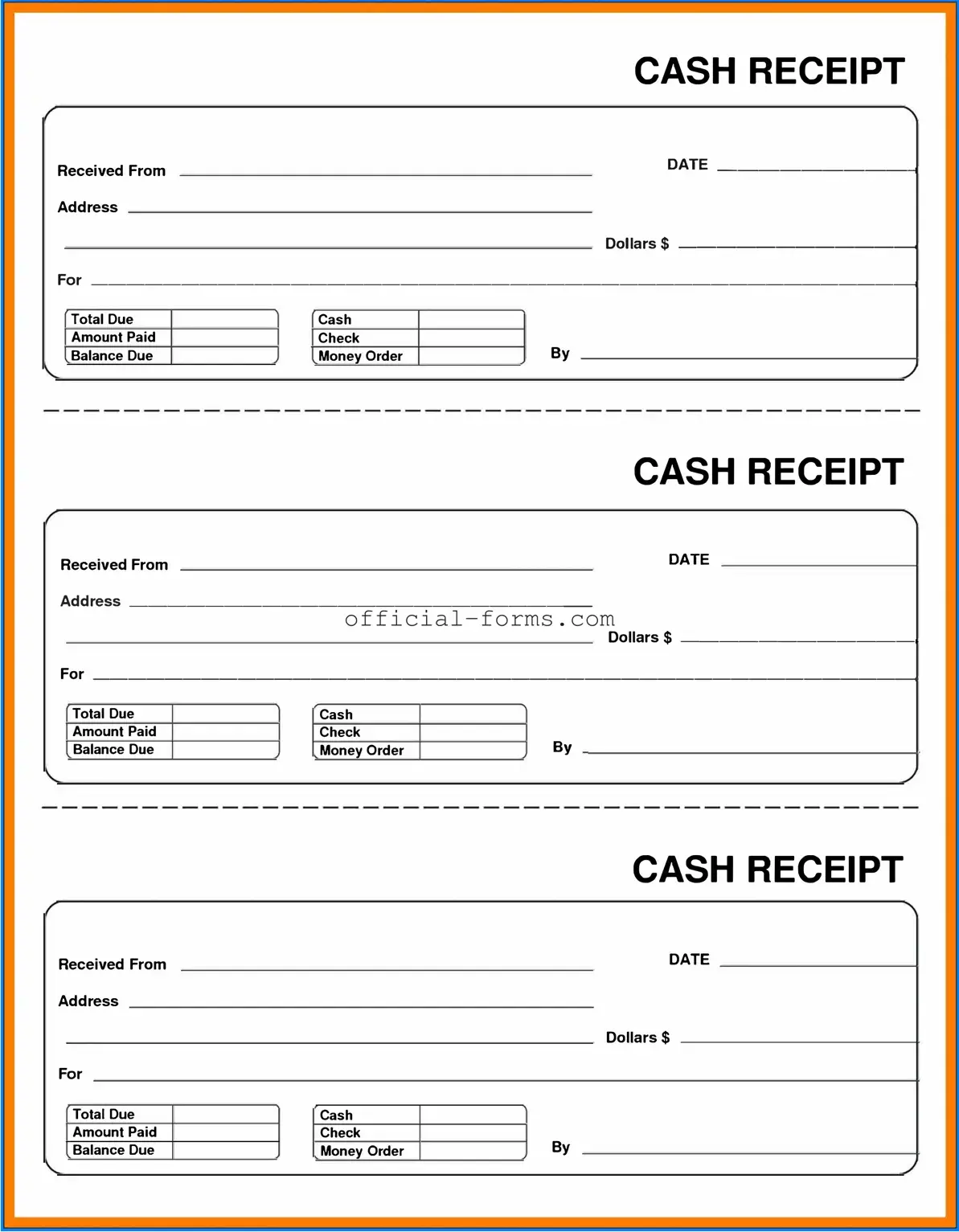In the world of financial transactions, the Cash Receipt form plays a crucial role in ensuring transparency and accuracy. This document serves as a formal acknowledgment of cash received by a business, whether from customers, clients, or other sources. It typically includes essential details such as the date of the transaction, the amount received, the method of payment, and the purpose of the payment. By capturing this information, the form not only helps in maintaining accurate financial records but also provides a clear trail for auditing purposes. Additionally, the Cash Receipt form often requires signatures from both the receiver and the payer, further legitimizing the transaction. This simple yet powerful tool aids businesses in managing their cash flow effectively and supports accountability in financial dealings. Understanding the nuances of the Cash Receipt form is vital for anyone involved in financial management, as it underpins the integrity of a company's financial practices.
